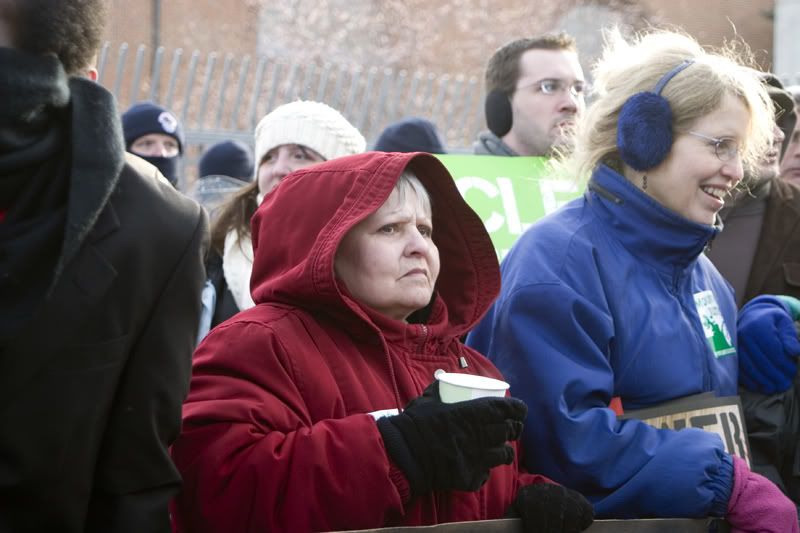January 19, 2011
W.Va. mining activists criticize Tomblin's rally
MORGANTOWN, W.Va. (AP) - Mountaintop removal mining activists said Wednesday that acting Gov. Earl Ray Tomblin is behaving like a lobbyist for organizing a rally in which he and other
politicians plan to criticize the federal Environmental Protection Agency.
Tomblin has invited the public to join him, other politicians and industry officials for a rally that he said is designed to show the agency how coal is beneficial to the lives of West Virginians and others across the country.
It's set for 2 p.m. Thursday at the state Capitol in Charleston.
The rally is in response to the EPA's veto last week of a crucial permit for Arch Coal Inc.'s planned Spruce No. 1 mine in Logan County. The agency said the permit would cause irreparable environmental damage and threaten the health of nearby communities.
The 2,300-acre mine would have been the state's largest mountaintop removal operation. Environmental groups have fought for years to stop it.
Several longtime activists accused Tomblin during a Wednesday conference call on the ruling of shilling for the industry and ignoring the concerns of communities near the large strip mines.
"What acting Governor Tomblin is doing Thursday is not in keeping with the needs of the people of West Virginia," said Vernon Haltom of Coal River Mountain Watch. "He is acting as a coal lobbyist and not as a governor should."
Tomblin's spokeswoman, Jacqueline Proctor, defended the event.
"The core of what the governor is trying to express is the fact that the EPA revoked a permit that had been issued several years ago - and we take umbrage with that," she said.
Activists say millions of dollars in industry donations to state political campaigns - from the Legislature to state Supreme Court - have caused most of the state's politicians to ignore "people who live with the misery of mountaintop removal."
"EPA is doing its job. EPA is applying science," added retired miner Chuck Nelson, an activist with the Ohio Valley Environmental Coalition. "Everyone is taking the money. That's why don't want to focus on the health issues."
One of the lawyers who has been fighting the Spruce mine since 1998 said he hopes the ruling signals a change. Both the EPA and the corps have historically been "little more than rubber stamps" when it comes to permitting coal mines, said Joe Lovett, executive director for the Appalachian Center for the Economy & the Environment.
In this case, however, EPA had been critical of the corps' Clean Water Act permit form the start, he said.
Lovett said his group and others will continue to fight mountaintop removal mines that are permanently changing the landscape of southern West Virginia and parts of Kentucky, Virginia and Tennessee.
"The Spruce mine - though it is important for us because it was where we started - isn't a unique mine," he said. "It is an important decision, but we hope it's the first of many."
Activists say millions of dollars in industry donations to state political campaigns - from the Legislature to state Supreme Court - have caused most of the state's politicians to ignore "people who live with the misery of mountaintop removal."
"EPA is doing its job. EPA is applying science," added retired miner Chuck Nelson, an activist with the Ohio Valley Environmental Coalition. "Everyone is taking the money. That's why don't want to focus on the health issues."
One of the lawyers who has been fighting the Spruce mine since 1998 said he hopes the ruling signals a change. Both the EPA and the corps have historically been "little more than rubber stamps" when it comes to permitting coal mines, said Joe Lovett, executive director for the Appalachian Center for the Economy & the Environment.
In this case, however, EPA had been critical of the corps' Clean Water Act permit form the start, he said.
Lovett said his group and others will continue to fight mountaintop removal mines that are permanently changing the landscape of southern West Virginia and parts of Kentucky, Virginia and Tennessee.
"The Spruce mine - though it is important for us because it was where we started - isn't a unique mine," he said. "It is an important decision, but we hope it's the first of many."




